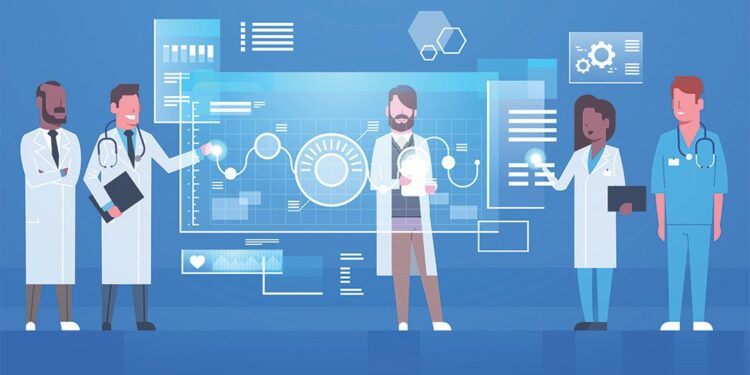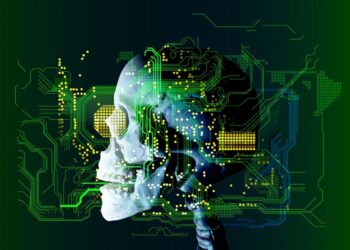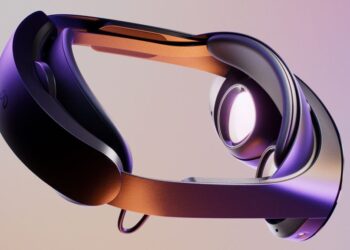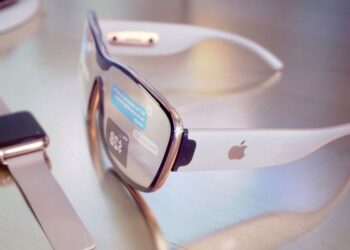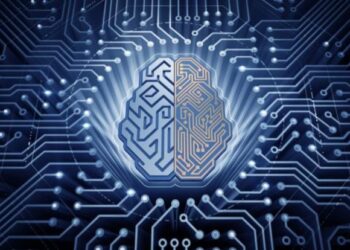These groundbreaking developments are not just enhancing the way practitioners deliver medical services, but also how patients perceive and experience healthcare as a whole. Each breakthrough brings a unique angle—be it in data analytics, personalized medicine, connected devices, or groundbreaking genetic editing—designed to improve outcomes, increase efficiency, reduce costs, and expand accessibility to quality medical care.
In this comprehensive exploration, we will delve deep into six modern breakthroughs that are actively redefining healthcare. We will thoroughly examine their origins, how they function, their current applications, and their long-term implications for both providers and patients. The following six innovations have emerged as powerful forces driving the sector forward, and while they are all distinct, they share a single overarching goal: to create a more patient-centered, efficient, and effective healthcare system on a global scale.
A. Telemedicine and Telehealth Solutions
Telemedicine and telehealth solutions have steadily risen from being niche concepts to essential cornerstones of contemporary healthcare delivery. They offer patients the ability to connect with medical professionals remotely, eliminating the necessity of traveling long distances to clinics or hospitals for non-urgent medical consultations. This transformation profoundly impacts patients living in rural or underserved regions, where access to specialized care can be limited or nearly impossible.
- Evolution of Telemedicine
Telemedicine emerged in earlier decades primarily as a tool for doctors working in remote locations, such as research stations or isolated communities. In those early days, rudimentary methods like radio communication and simple telephone consultations bridged geographical gaps. With improvements in communication technology, broadband internet, and smart devices, telemedicine shifted from a rarity to a mainstream solution. Today’s telehealth platforms leverage high-speed internet, encrypted video conferencing, integrated patient data systems, and even artificial intelligence-driven symptom checkers to provide high-quality care remotely. - Applications in Virtual Care
Healthcare professionals can now conduct virtual appointments, follow-ups, mental health counseling sessions, and even group therapy. For chronic conditions like diabetes or hypertension, consistent remote monitoring through telehealth platforms can alert providers to changes in patient conditions, enabling proactive interventions. Patients can securely share their medical records, imaging results, and laboratory tests to specialists worldwide, potentially receiving expert opinions in hours rather than weeks. - Benefits and Future Implications
A. Reduced travel times and related costs for patients
B. Increased patient adherence to treatment plans through more frequent touchpoints
C. Expansion of healthcare services to remote, underserved communities
D. Potential for reducing patient wait times and hospital overcrowding
As telemedicine matures, it will likely integrate more seamlessly with wearable devices, remote monitoring systems, and AI-driven triage tools. Over time, this synergy may lead to a decreased strain on healthcare infrastructure while improving overall patient satisfaction and clinical outcomes.
B. Artificial Intelligence and Machine Learning in Healthcare
Artificial Intelligence (AI) and machine learning (ML) have achieved remarkable prominence in healthcare due to their potential to process enormous quantities of data, identify patterns, and generate predictions that can assist clinicians in making better-informed decisions. From diagnostics support to personalized treatment recommendations, AI is rapidly permeating every corner of the medical industry.
- Enhancing Diagnostics and Early Detection
Perhaps one of the most celebrated applications of AI in medicine is in the realm of diagnostics. Sophisticated algorithms can analyze medical images such as MRIs, CT scans, and X-rays more quickly and, in some cases, more accurately than human eyes alone. By flagging suspicious lesions, growths, or abnormalities, these tools help radiologists and other specialists detect conditions like cancer, brain tumors, or heart disease at earlier stages. - Drug Discovery and Clinical Trials
Traditionally, drug discovery has been an expensive and time-consuming process, often spanning a decade and costing billions of dollars. AI-driven systems can rapidly sift through vast databases of molecular structures, published research, and patient data to identify promising drug candidates. By simulating drug interactions and analyzing patient outcomes, AI reduces trial-and-error phases, expedites the research process, and brings novel therapies to market faster. - Personalized Treatment Recommendations
AI-driven platforms can integrate patient data, including genetic profiles, medical histories, lifestyle factors, and current treatments, to offer personalized medication plans and dosing guidelines. For instance, AI can suggest adjusting the dosage of a particular medication based on real-time patient parameters, ensuring safer and more effective therapy. - Administrative and Operational Efficiency
Healthcare providers are also deploying AI in administrative tasks, using chatbots to schedule appointments, virtual assistants to handle patient inquiries, and sophisticated software to manage billing, insurance claims, and patient flow. By automating routine tasks, clinical staff and physicians can focus more attention on direct patient care. - Ethical Considerations and Long-Term Outlook
While AI holds incredible promise, there are complex ethical considerations surrounding privacy, bias in algorithms, and the need for human oversight. Providers must ensure that data is stored securely and processed ethically, maintaining transparency and accountability. If managed responsibly, AI will contribute to more accurate diagnoses, efficient operations, and ultimately improve patient outcomes. The future likely involves more seamless integration of AI-based decision support tools into everyday medical practice, gradually refining care pathways while empowering physicians rather than replacing them.
C. Wearable Health Devices and Remote Patient Monitoring
The rising popularity of wearable technology—smartwatches, fitness bands, continuous glucose monitors, and other connected health devices—has ushered in a new era of patient engagement and data-driven healthcare. These devices can collect detailed metrics about a patient’s physiological state in real-time, from heart rate and blood pressure to glucose levels and sleep patterns.
- Empowering Patients Through Data
Previously, the patient’s interaction with healthcare providers happened predominantly during scheduled appointments or acute illness episodes. With wearables, patients can continuously track their health metrics, gaining insights into trends and patterns that might warrant medical attention. This continuous feedback loop encourages patients to take proactive steps to improve their health, whether by adjusting diet, increasing exercise, or seeking medical advice when anomalies arise. - Chronic Disease Management
For conditions like diabetes, cardiovascular diseases, or respiratory disorders, continuous monitoring can be life-changing. For example, a patient with diabetes can use a continuous glucose monitor to track blood sugar levels throughout the day and night. If levels fluctuate, alerts can prompt timely insulin administration or dietary adjustments. Similarly, patients with heart conditions can wear devices that track arrhythmias, blood pressure, or oxygen saturation, enabling doctors to intervene before a minor issue escalates into a critical emergency. - Integration with Healthcare Ecosystems
When wearable devices integrate seamlessly with telemedicine platforms, AI-driven analytics, and electronic health records, healthcare providers can gain a holistic view of patient health. They can receive alerts for concerning shifts in vital signs and recommend interventions or schedule follow-up consultations. Over time, these interconnected systems can reduce hospital readmissions, streamline care coordination, and ultimately enhance patient outcomes. - Market Expansion and Future Directions
As wearable sensors become more accurate, comfortable, and less invasive, we can expect to see an even broader range of biometric measurements. Advances in sensors may allow non-invasive blood pressure monitoring, continuous oxygen-level checks, or even early warning signals for infections. Improved battery life, data security protocols, and interoperability standards will further bolster their credibility and adoption.
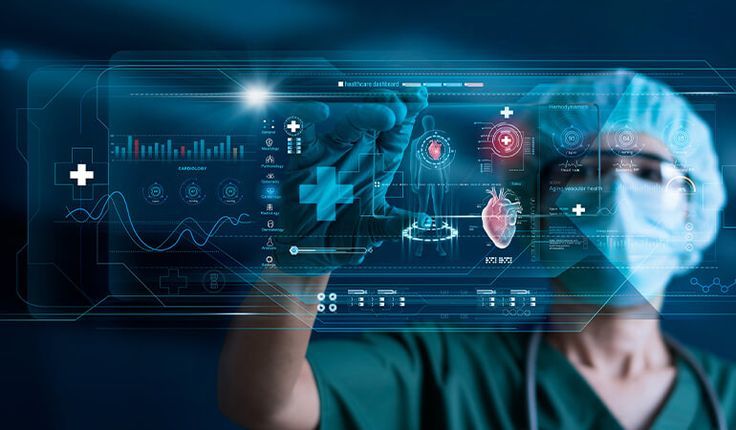
D. Robotic Surgery and Medical Robotics
Robots have steadily integrated into surgical theaters and other clinical environments, revolutionizing how surgeries are performed. Medical robotics extend beyond surgical applications, permeating rehabilitation, patient care assistance, and even pharmacy tasks. Their precision, stability, and ability to facilitate minimally invasive procedures have elevated patient outcomes and redefined the surgeon’s role.
- Surgical Precision and Minimally Invasive Procedures
Surgical robots, controlled by highly trained physicians, can operate with precision beyond the limits of human hands. Minimally invasive surgeries performed with robotic assistance often lead to smaller incisions, less blood loss, reduced pain, and faster recovery times. By filtering out hand tremors and providing advanced visualization tools, these systems make complex procedures safer and more consistent. - Teleoperated Surgeries
The integration of advanced communication networks with surgical robotics opens doors for remote surgeries. A skilled surgeon located in an urban center could operate on a patient in a remote village, provided a stable and secure connection exists. This innovation holds enormous promise for global health equity, allowing access to expert surgical care regardless of geographical limitations. - Beyond the Operating Room
Robots are also finding their way into tasks like patient rehabilitation and physical therapy. Robotic exoskeletons can help patients regain mobility after strokes or spinal cord injuries. Pharmacy robots can handle medication dispensing with extreme accuracy, reducing errors and freeing pharmacists to focus on patient counseling and clinical duties. - Future Trends in Medical Robotics
As robotic technologies evolve, we can expect more compact systems with enhanced haptic feedback, AI-driven surgical planning, and integration with imaging technologies. Eventually, robots may take on more delicate tasks, such as microsurgeries in ophthalmology or neurosurgery, further improving patient outcomes.
E. Gene Editing and CRISPR-Based Therapies
The advent of CRISPR-Cas9 and other gene-editing technologies signals a new frontier in medicine. By precisely altering DNA sequences, researchers can potentially prevent, treat, or even cure genetic disorders previously considered incurable. Gene editing holds tremendous promise, but it also demands careful consideration of ethical and safety concerns.
- How Gene Editing Works
Gene editing technologies like CRISPR function like molecular scissors, enabling scientists to cut DNA at a specific location. By editing or replacing defective genes, they can theoretically correct mutations that cause conditions such as cystic fibrosis, sickle cell disease, or certain inherited forms of blindness. These therapies move medicine from treating symptoms toward addressing the root genetic causes of diseases. - Current Applications and Clinical Trials
Several clinical trials are exploring the use of gene editing in blood disorders, cancers, and rare genetic conditions. For example, modifying a patient’s immune cells to better recognize and attack cancer cells could revolutionize cancer therapy. Similarly, correcting genetic mutations responsible for severe childhood illnesses could grant patients a healthy start in life. - Ethical Considerations and Regulatory Pathways
The potential to alter human genes raises profound ethical questions. Where should the line be drawn between therapeutic interventions and human enhancement? Regulating gene editing will require international cooperation, stringent safety standards, and transparent clinical trial data. As scientists and policymakers navigate these complexities, gene editing could become a cornerstone of future personalized medicine. - Long-Term Outlook
With proper oversight, gene editing may become a safe and effective strategy for preventing and curing previously untreatable diseases. Over the coming decades, as scientists learn to refine gene-editing tools, off-target effects may diminish, making therapies more predictable and accessible. This innovation could expand the scope of what is medically possible, transforming our concept of health and disease management.
F. Big Data Analytics and Healthcare Informatics
The digital age has inundated the healthcare industry with colossal amounts of data, encompassing electronic health records, clinical trial results, imaging studies, insurance claims, and patient-generated health data. While this data was once seen as an unwieldy mass of information, today’s big data analytics and healthcare informatics tools can distill valuable insights that drive better clinical decisions, policy-making, and overall system optimization.
- Leveraging Data for Predictive Analytics
Rather than relying solely on physician intuition or standard guidelines, healthcare providers can now use data analytics platforms to predict patient risks. For example, analyzing historical admission patterns, lab results, and patient demographics can help hospitals anticipate patient surges, allocate staff efficiently, and reduce wait times. Likewise, predictive models can identify individuals at high risk for readmission or complications, prompting early interventions. - Improving Population Health Management
Big data can inform policies and interventions at the community or population level. Health authorities can detect disease outbreaks earlier, track the effectiveness of vaccination programs, and identify social determinants of health that contribute to disparities in care. By recognizing these patterns, healthcare systems can allocate resources more efficiently and design targeted preventive measures. - Personalized Medicine and Evidence-Based Care
When combined with AI, big data analytics can unveil correlations that inform personalized treatment plans. By analyzing genetic data, lifestyle information, and treatment outcomes from thousands of similar patients, clinicians can refine care strategies for individual patients. Furthermore, big data can continuously update best practices as new evidence emerges, ensuring that treatment approaches remain current and effective. - Data Security, Privacy, and Interoperability
Handling healthcare data responsibly is paramount. Ensuring interoperability between different electronic health record systems and protecting patient confidentiality are critical challenges. Healthcare organizations must invest in robust cybersecurity measures and comply with regulations like HIPAA to safeguard patient information. Trust in data management systems is crucial if patients and providers are to fully embrace the power of big data analytics. - Future of Healthcare Informatics
As technology advances, we may see more sophisticated algorithms capable of natural language processing, sentiment analysis, and real-time decision support. Eventually, seamless integration of various data sources could provide clinicians with a comprehensive, up-to-the-minute view of a patient’s health, making care more proactive, efficient, and patient-centered.
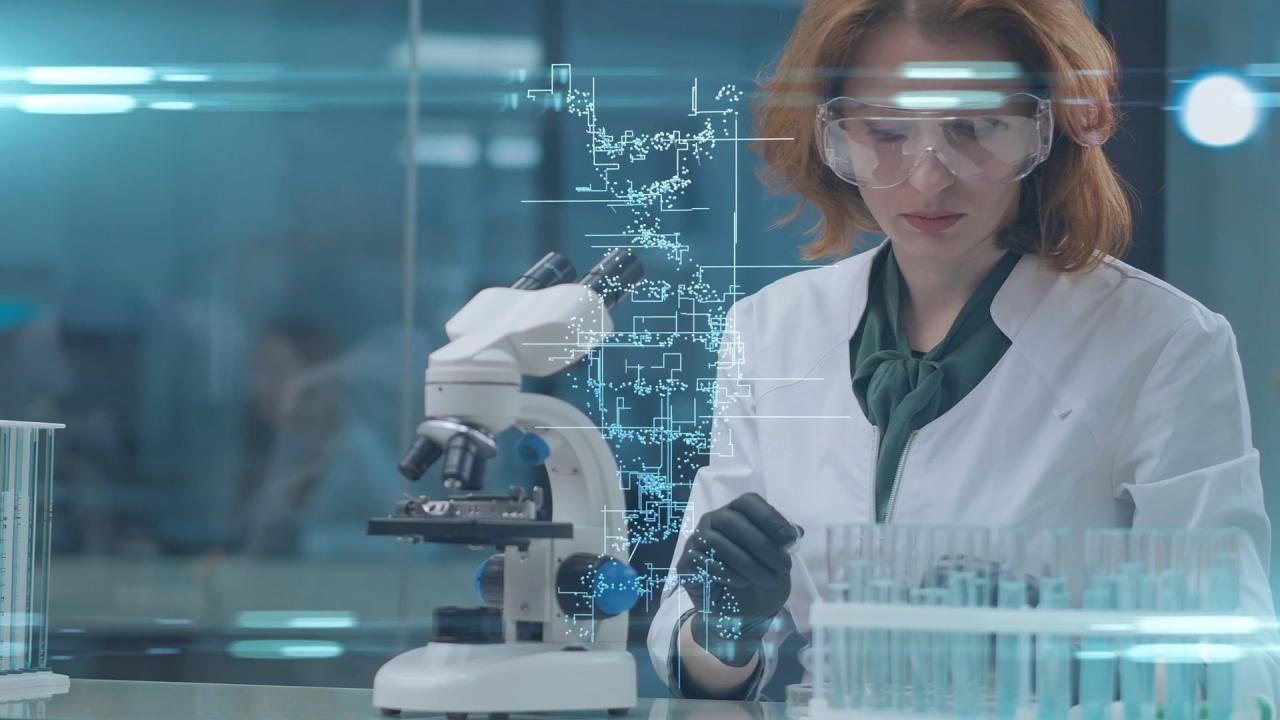
Additional Considerations and Future Directions
While we have highlighted six distinct areas of innovation—telemedicine, AI, wearables, robotics, gene editing, and big data—these breakthroughs rarely operate in isolation. The greatest impact on healthcare will come from their integration. Consider a patient with a genetic predisposition to a certain disease who uses a wearable device to track biomarkers. Alerts can be sent to an AI-powered telemedicine platform for prompt consultation, potentially involving robotic-assisted procedures or advanced therapies guided by big data analytics. In the long run, this interconnected ecosystem will elevate healthcare from a reactive model to one focused on prevention, prediction, and precision.
1. Interdisciplinary Collaboration
A key driver behind these innovations is the convergence of multiple fields—medicine, computer science, engineering, genetics, data analytics, and ethics. Interdisciplinary teams are essential for tackling complex healthcare challenges, ensuring new technologies are not only advanced but also practical, safe, and aligned with patient needs.
2. Regulatory and Policy Frameworks
The regulatory landscape must keep pace with rapid innovation. As technologies like AI-assisted diagnosis, gene editing, and remote surgeries become more commonplace, regulators need to establish guidelines, standardize best practices, and maintain public trust. Transparent oversight will help ensure these tools are safe and equitable, without stifling the creativity that drives progress.
3. Sustainability and Global Reach
Sustainability is vital as healthcare systems worldwide face rising costs, resource constraints, and demographic shifts. Innovations that increase efficiency, reduce waste, and improve outcomes can help stabilize healthcare ecosystems in developed nations while extending care into low-income countries. Telemedicine and AI-driven diagnostics, for instance, can drastically reduce disparities in healthcare access and quality.
4. Continuous Learning and Adaptation
Healthcare is not static; it evolves as society’s needs change. Technologies that seem groundbreaking today might become standard practice tomorrow. Thus, medical professionals, administrators, policymakers, and patients must remain open-minded, embracing continuous learning and adaptation. Ongoing training, updated educational curricula, and transparent communication will ensure that all stakeholders benefit from these healthcare transformations.
Conclusion
The modern healthcare landscape is undergoing a profound metamorphosis, fueled by innovative technologies that challenge long-standing norms. Telemedicine extends care beyond hospital walls, AI refines diagnostics and treatment, wearable devices empower patient self-management, robotics enhance surgical precision, gene editing targets diseases at their genetic roots, and big data analytics enable evidence-based and personalized care at an unprecedented scale.
While these six breakthroughs are each remarkable in their own right, their true potential emerges when integrated into a cohesive healthcare ecosystem. Such synergy promises a future where care is not only more efficient and accessible but also genuinely patient-centric. Patients, providers, researchers, and policymakers must work together to shape this rapidly evolving landscape, ensuring that each innovation contributes to safer, more equitable, and more effective healthcare worldwide.

